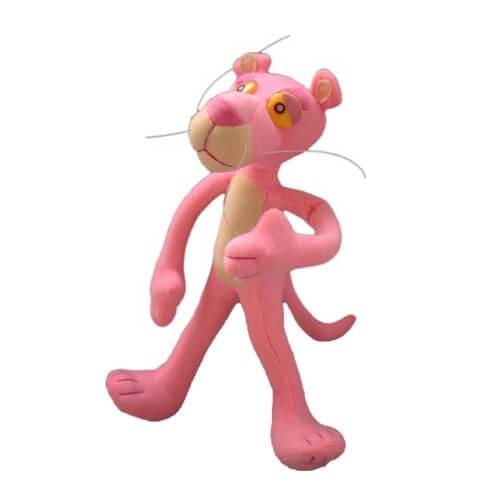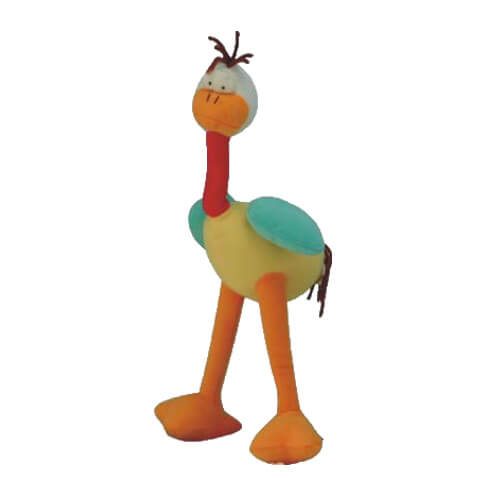 admin
admin
 Feb 01,2018
Feb 01,2018

Select the security stuffed toys is an important way to protect your baby. Looking for washable plush toys, flame retardant, non-toxic material. Make sure the toy has no rope, removable parts and other suffocation hazards. Choose a suitable age group of baby toys, and always supervise your baby while playing safe stuffed toys.
Giving the Toy a Once-Over
1. Make sure the toy does not have long strings. The baby\'s neck may wrap around long ropes and cause suffocation. They may also swallow the rope to cause suffocation. To avoid these unpleasant results, take a closer look at the plush toys you are considering for your baby. Checking the pull line on the back of the toy may make the stuffed toy say something.
2. Make sure the toy has no detachable parts. Removable parts are more common on solid plastic toys and action figures. But plush toys often come with removable accessories, such as cups or glasses that may be detached from Velcro. Conduct a thorough investigation of the toy to see detachable parts that may come off, avoiding the risk of suffocation.
Some stuffed toys seem to have non-removable parts, but in fact there. For example, stuffed toys that make a nose with marble or glass eyes or buttons are considered unsafe to infants.
If some stuffed toys are broken, don’t try to fix it. Instead, put the toy back into the store for another safer stuffed toy. Don’t try to get replaced.
3. Be careful when filling toys with battery. Batteries are a serious danger to babies. If your baby wants a plush toy with a battery, make sure the battery is secured by the panel that must be removed to the battery. Don’t give your child a toy-filled panel that simply opens. Although it is unlikely that the baby will open the panel, this isn’t a risky thing to do.
If your baby\'s soft toy is lit, dancing or some other action, it\'s battery-powered.
You can also identify battery-powered toys by labeling them “battery-powered” on the package.
Check if the battery-operated stuffed toy will leak the battery acid at any time. Battery acid will leave behind a crusty, discolored area inside the battery panel. It might be brown or white in color. Discard any batteries that leak battery acid, clean out the toy’s battery panel, and insert fresh batteries.
4. Avoid sharp toys. Even filled or partially filled toys sometimes have sharp seats. For example, do not give your child a plush goat stuffed with plastic horns protruding from the head. Your baby may have sharp corners in their eyes. Such an injury may impair their vision.
Even soft, stuffed bits of a toy should be treated with suspicion. Avoid any sharp plush toys.
5. Make sure toys are high quality. When checking the safety of plush toys, gently drag the seams along their seams. If you feel the toy is not sewn well, do not buy it. Instead, look for stuffed, hard-to-tear or torn plush toys.
Low-quality stuffed toys are not safe for babies. If they rip and spill soft stuffing, your baby may eat it and choke. Choose soft toys that can withstand chewing and similar abuses.
Choose lightweight fill toys. For example, avoid giving your baby a huge plush gorilla at the show. Plush toys are too big and / or heavy, not safe for infants. If a refilled toy falls, it may easily suffocate your baby.
6. Follow age guidance. The safety stuffed toy will include a label telling parents how old to use a particular toy. For instance, you might encounter a stuffed toy with a package that reads, “For children 2 and up.” This means that children younger than two years old should not play with that stuffed toy. In this case, if your child is younger than two, search for a safer stuffed toy.
7. Don’t choose old toys. If an elderly relative offers you an old plush toy, please gracefully refuse. Previous plush toys may not meet current safety standards and you may not know without the original packaging. In addition, like handlebars, they may wear out and may break more at the seam.
Choose the right material
1. Choose a washable material. Frequent use of the baby\'s safety stuffed toy can be quite dirty. When choosing safe stuffed toys for your baby, make sure you keep it clean. Check the care label or back of the stuffed soft toy for information about the toy material. Avoid buying plush toys that can not be washed.
Toys that are not washable (or not washed) collect germs and bacteria. This presents an unsafe situation for baby.
2. Buy non-toxic stuffed toys. Because the baby will put the soft toy in your mouth, you must give the baby a non-toxic soft toy. You can check the manufacturer\'s information to find out what ingredients go into a particular plush toy, but just to be safe, you should buy from a dealer stuffed toys, toys can only use natural materials.For instance, you might buy a toy from Nature’s Crib, The Soft Landing, Under the Nile, or Mama’s Earth.
The best stuffed toys are made of organic hemp, wool, and cotton.
Avoid stuffed toys made of materials that were exposed to pesticides, artificial dyes, finishes, and fertilizers.
3. Make sure the stuffed toy is fire-retardant. When checking the care label or package of the packaged toy, make sure the toy is “fire-retardant”. This means the toy does not get caught up easily. Plush toys that catch fire are not safe for babies.
Identify the stuffed toys your baby loves to play
1. Give the baby a plush ball. Babies like to watch the ball roll. Your baby can learn to play bowls on his own or roll back and forth with his baby. You and your baby will have a good time rolling the ball back and forth on a clean, soft surface.
2. Give your baby a soft doll. Your baby will have great fun with a stuffed doll. The stuffed doll could be a boy or a girl. It could represent a police officer, fire fighter, astronaut, or some other occupation. You could even give your baby two dolls to double the fun.
3. Give your baby a stuffed animal. With a stuffed animal in hand, your baby will begin learning all about the world of animals. You might, for instance, give your baby a stuffed monkey, cow, or pig. Teach your baby the appropriate sounds that the animal makes. For example, if you gave your baby a stuffed pig, say to your baby, “This is a pig. It makes a sound. The sound it makes is ‘oink oink.’”
4. Give your baby stuffed blocks. Stuffed blocks are, like normal blocks, approximately cube-shaped objects that can be stacked and played with. You might, for instance, encourage your baby to build a wall with their stuffed blocks.
5. You could also use the stuffed blocks to help your baby understand colors. For instance, you might take all the red stuffed blocks and pile them together. Point to the stuffed blocks and say, “These blocks are red.” Continue this pattern with other colors.
Keep baby safe during playtime
1. Oversee your baby. Baby is very creative. Even the safest stuffed toy, your baby may find a way to hurt yourself or fall into a prank. For that reason, it\'s important to always monitor your child while they are playing with the safe stuffed toy. When playing, don’t let the baby alone for a while.
2. Clean the baby\'s safety plush toy. Babies like to sneeze and drool, including their toys. Safety plush toys become bad after frequent use. Regularly clean your baby\'s soft toys according to the manufacturer\'s instructions. Wash any safe stuffed toys that fall on the floor or are visibly soiled.
Most stuffed toys have a care tag attached to them that provides information about washing and drying. Read the information included on the tag to wash the toy appropriately.
3. Help your baby take safe toys away. If your baby leaves safe stuffed toys lying about, the toys might cause others to trip or fall. Help your baby learn from an early age where toys belong once they are no longer being played with.
For example, when your child has finished playing safe toys, say: “This is the time to clean up. We put toys in the trash.” Put a safe stuffed toy in the toy box. If your baby can walk, encourage the baby to do the same.
4. Store safety plush toys on a covered chest. If your baby has a toy box with a heavy lid, they may accidentally put it on a tiny head or hand and hurt themselves. To avoid this misfortune, choose a box without a lid. It also makes it easier for the security of stuffed toys close to your baby.
5. Don’t let your baby sleep with a safe stuffed toy. Unless your baby is no longer sleeping in its crib, no stuffed toy is safe in bed with your baby. If you use a safety plush toys in bed, baby risk of sudden death syndrome (SIDS) will be greater.

